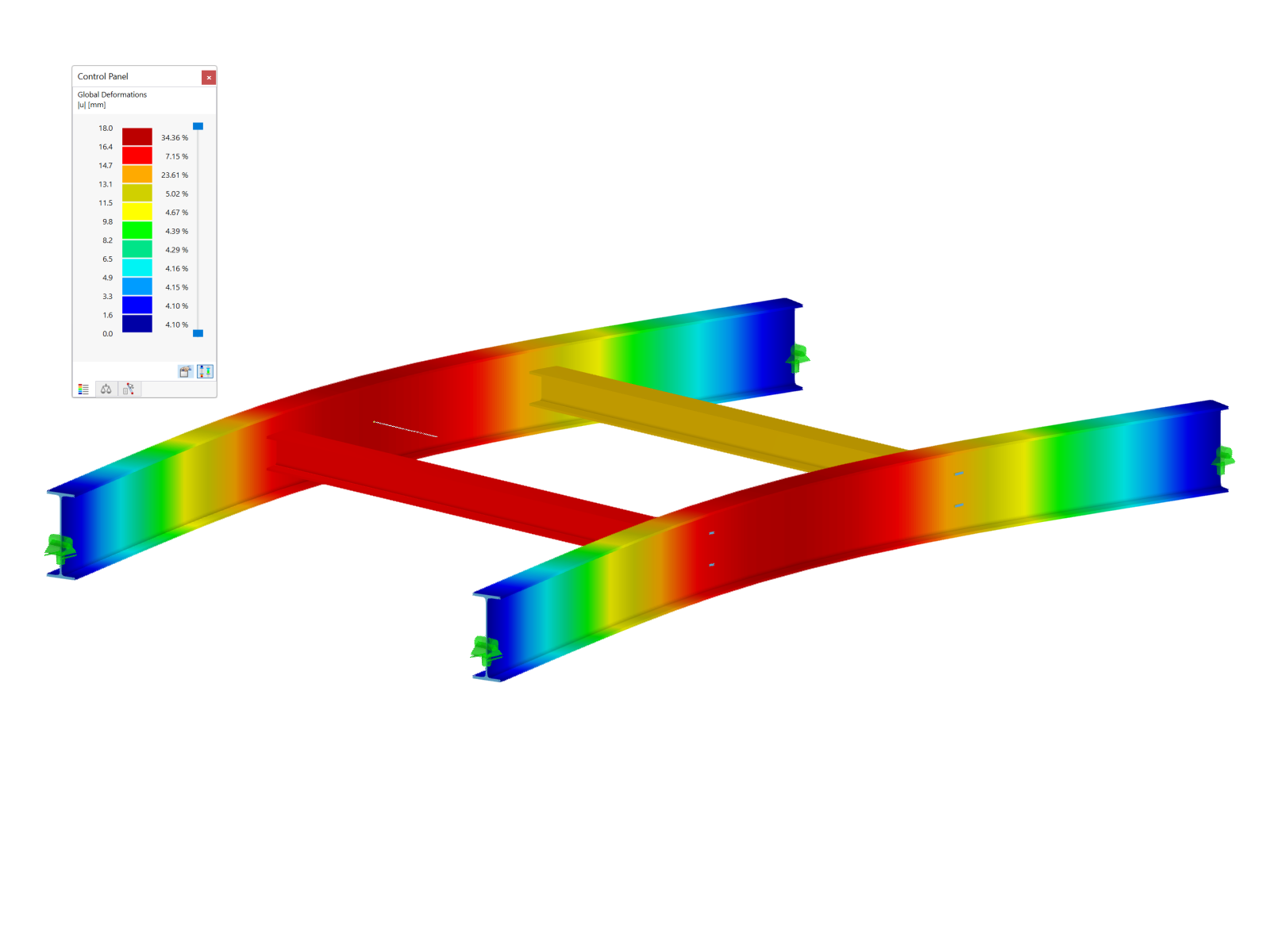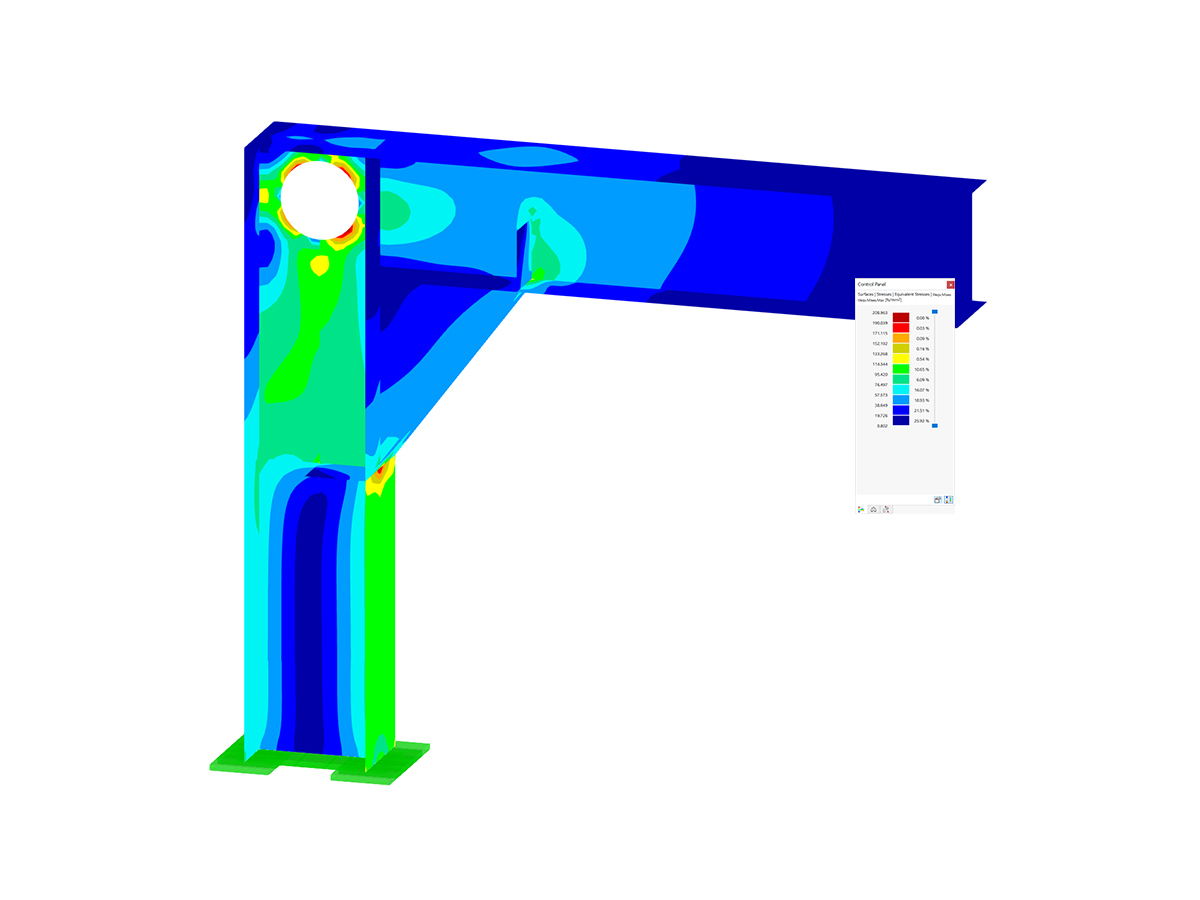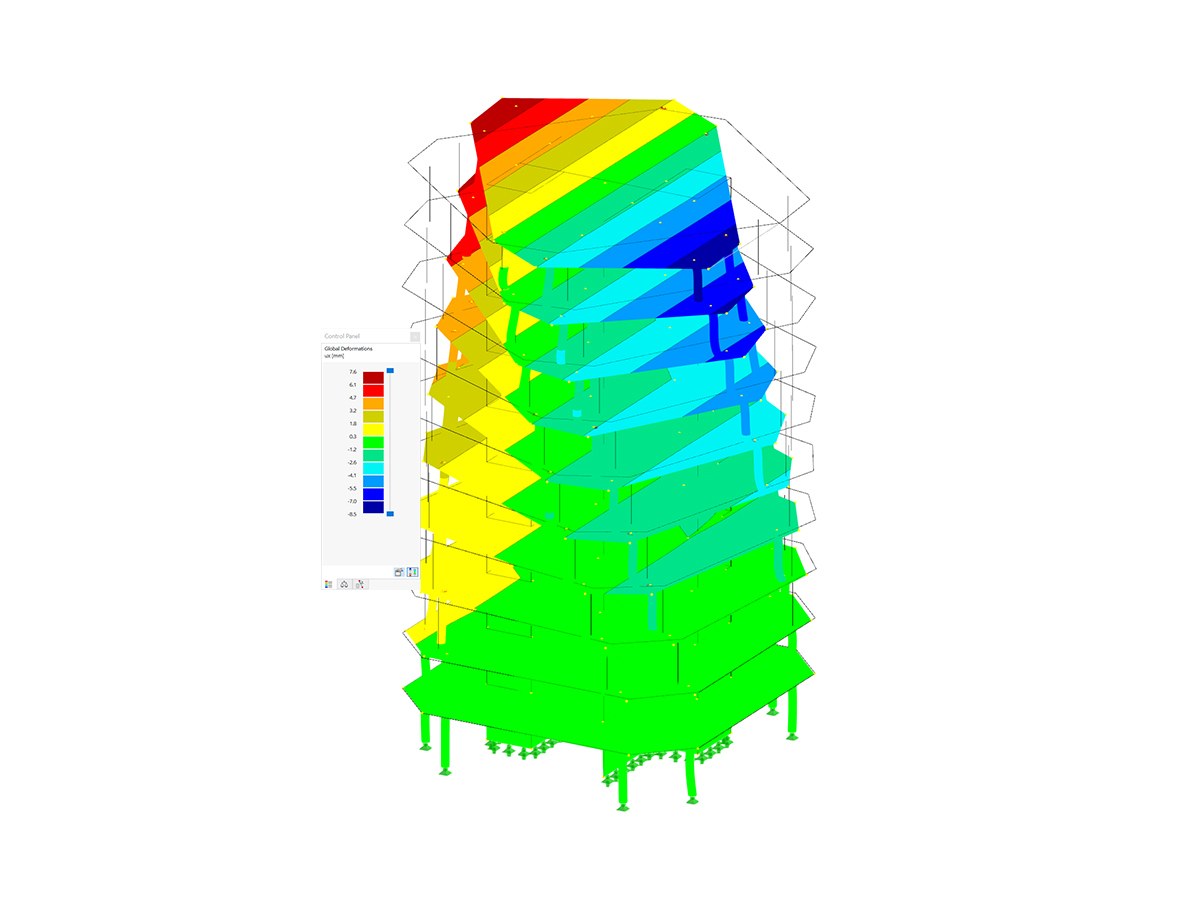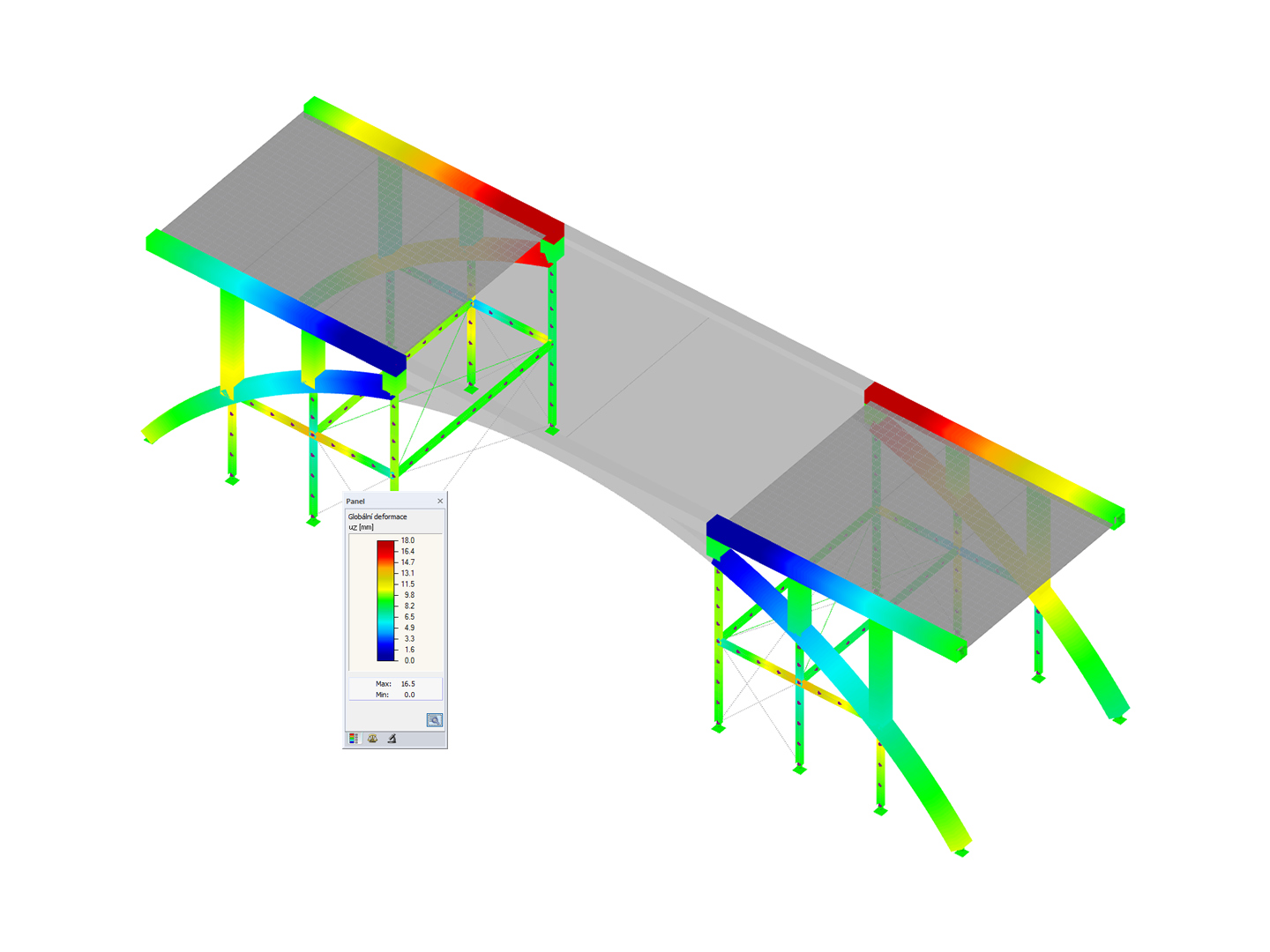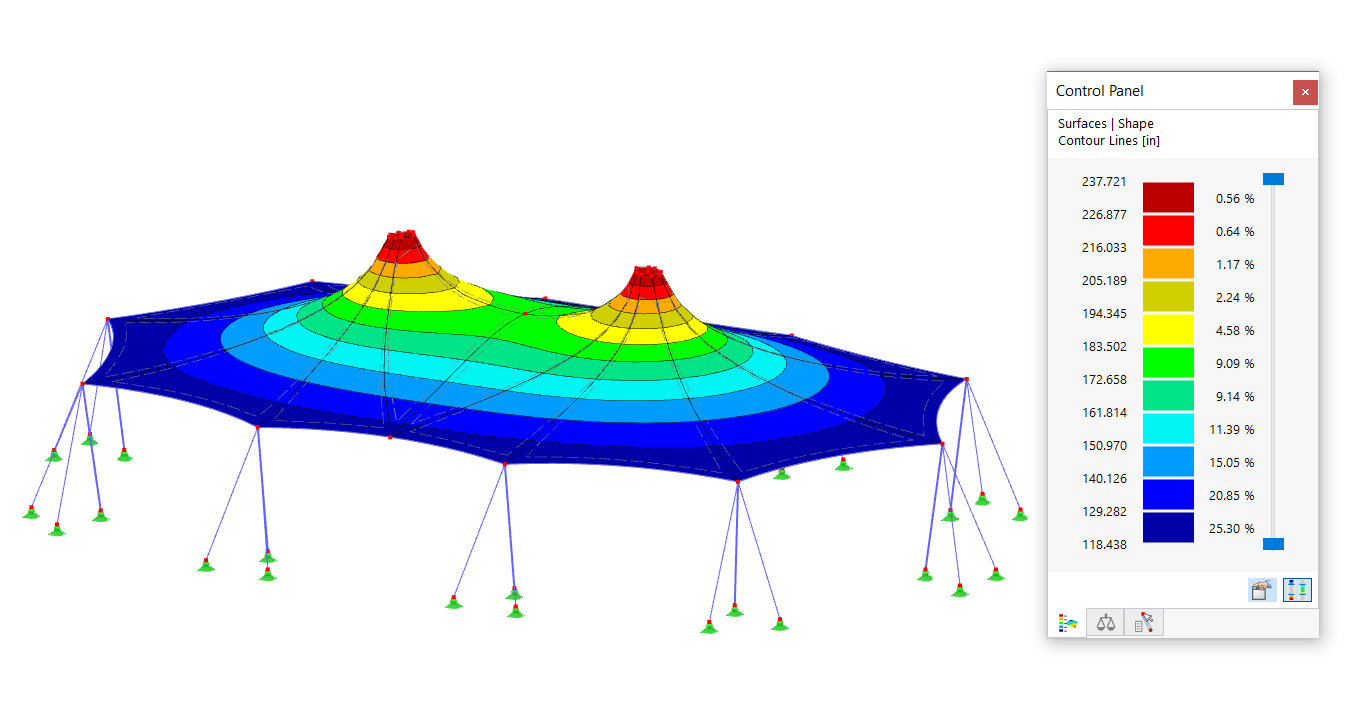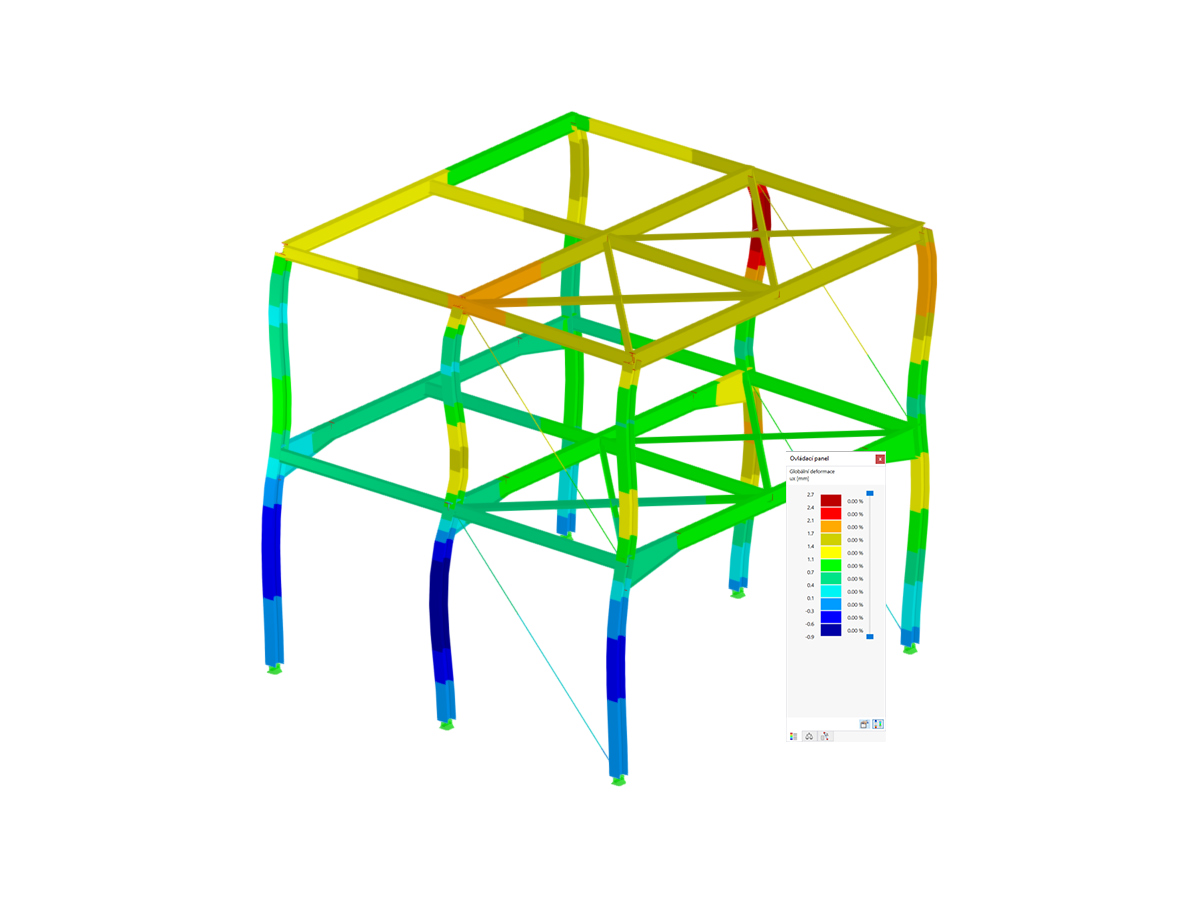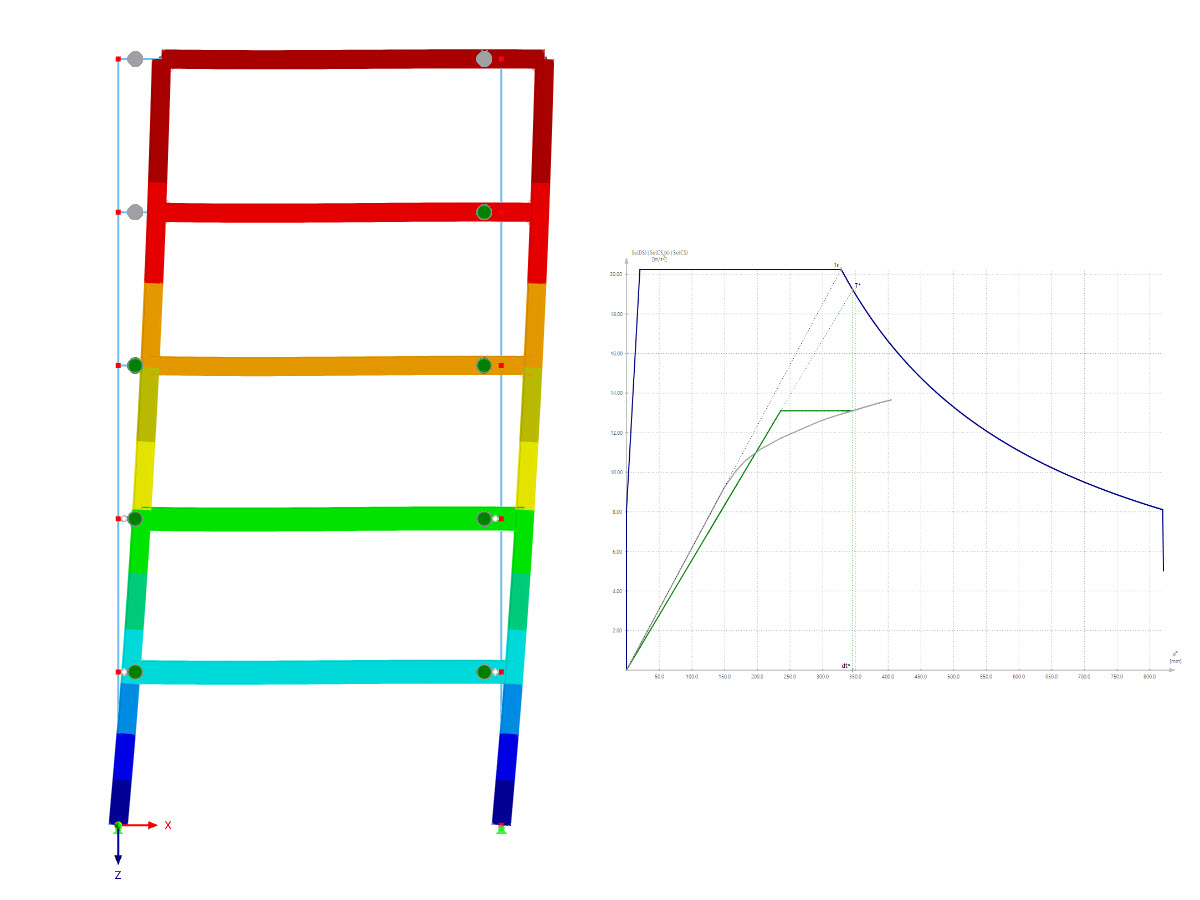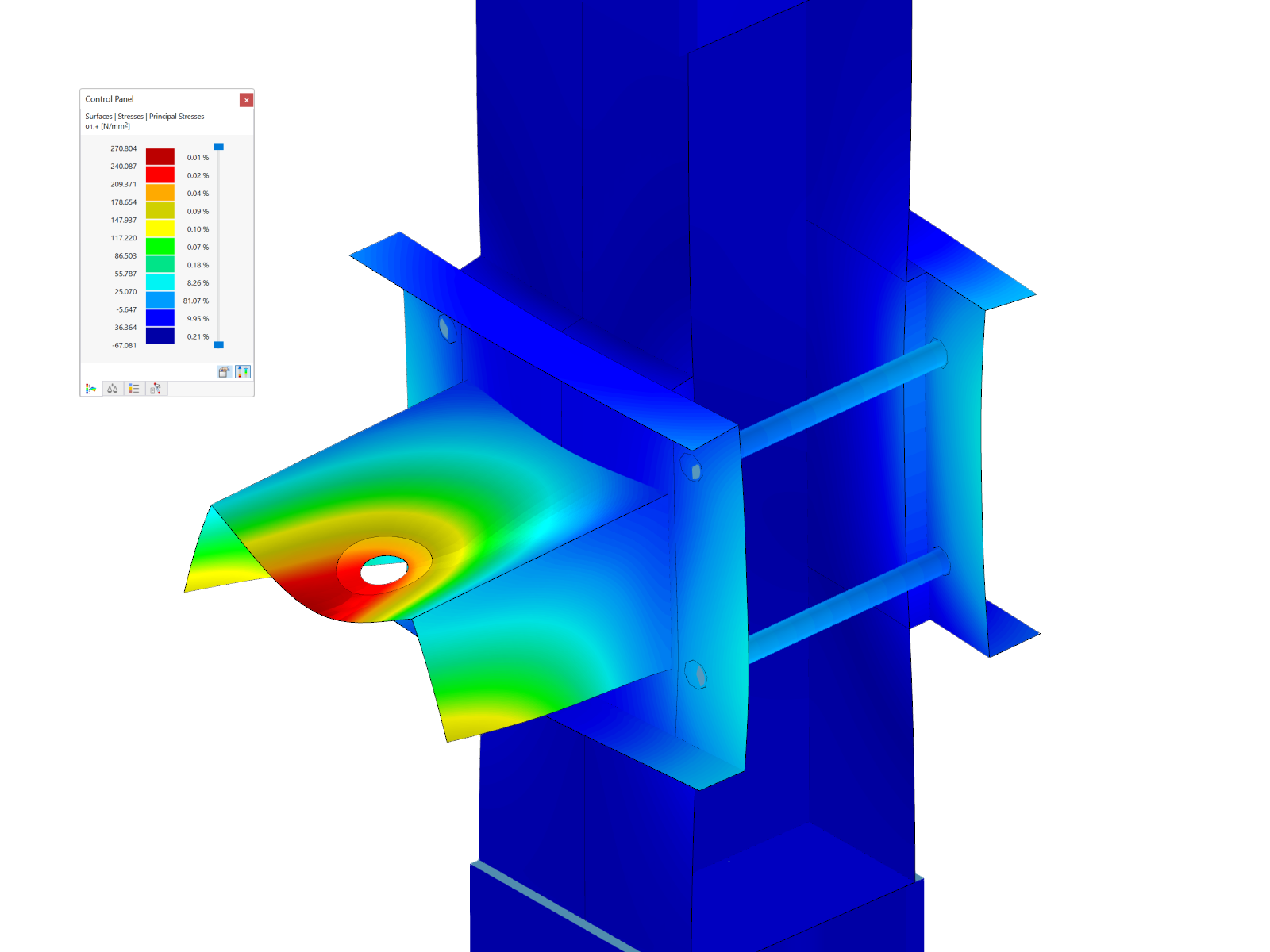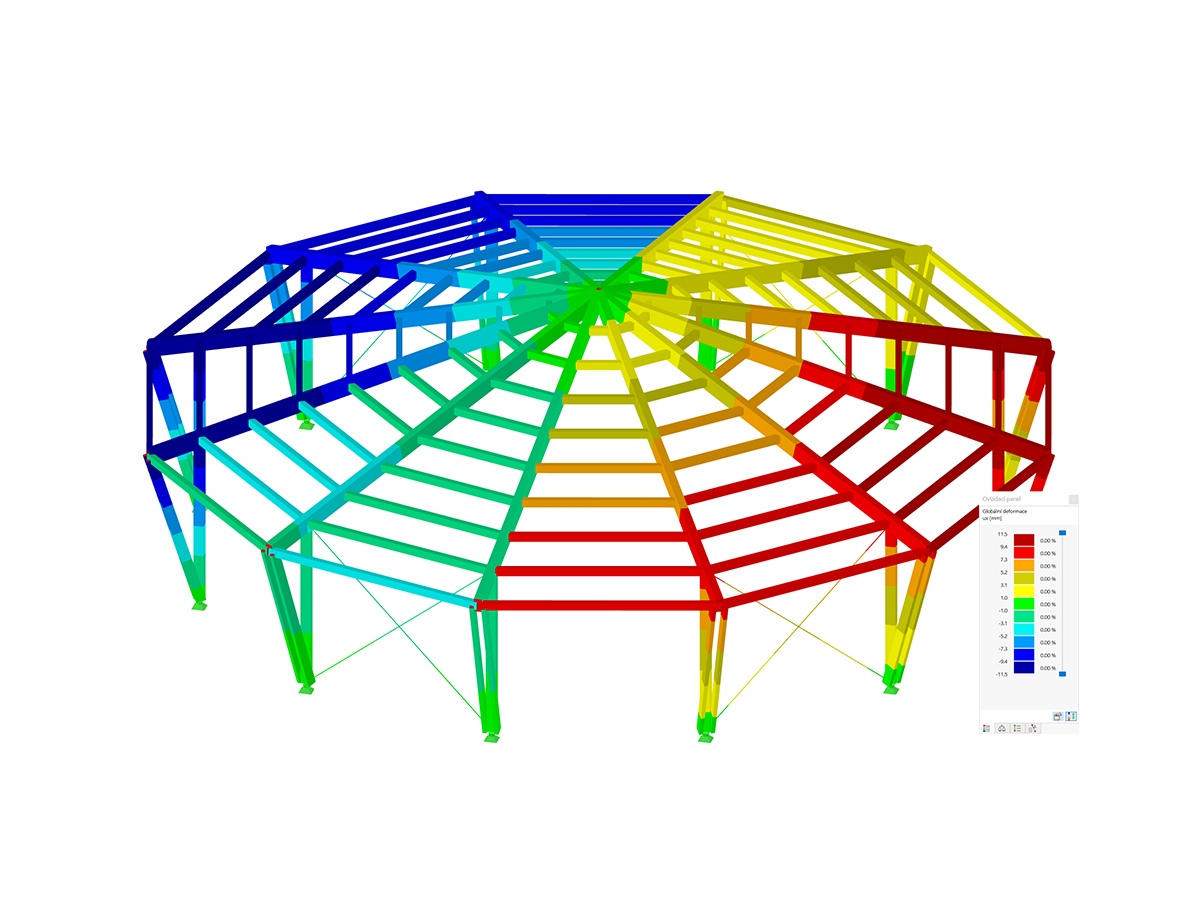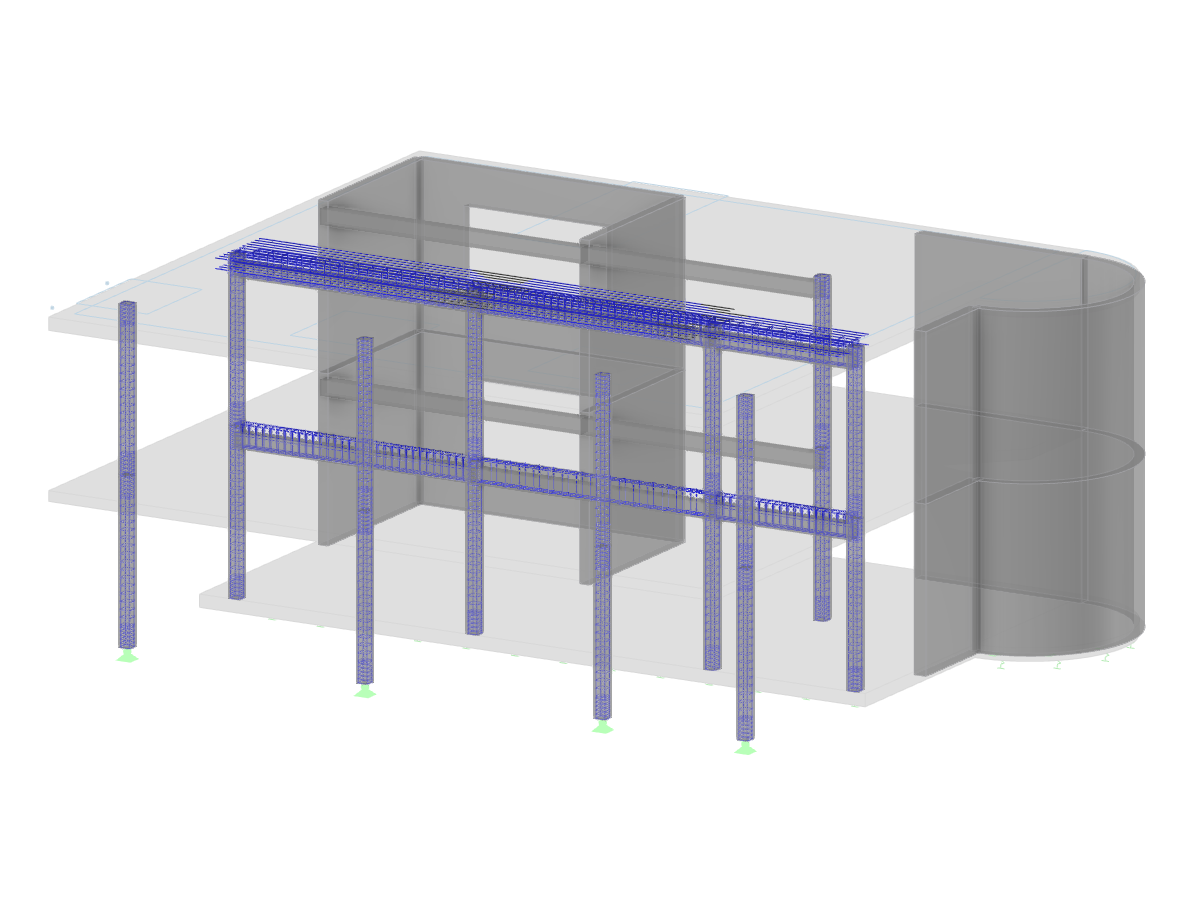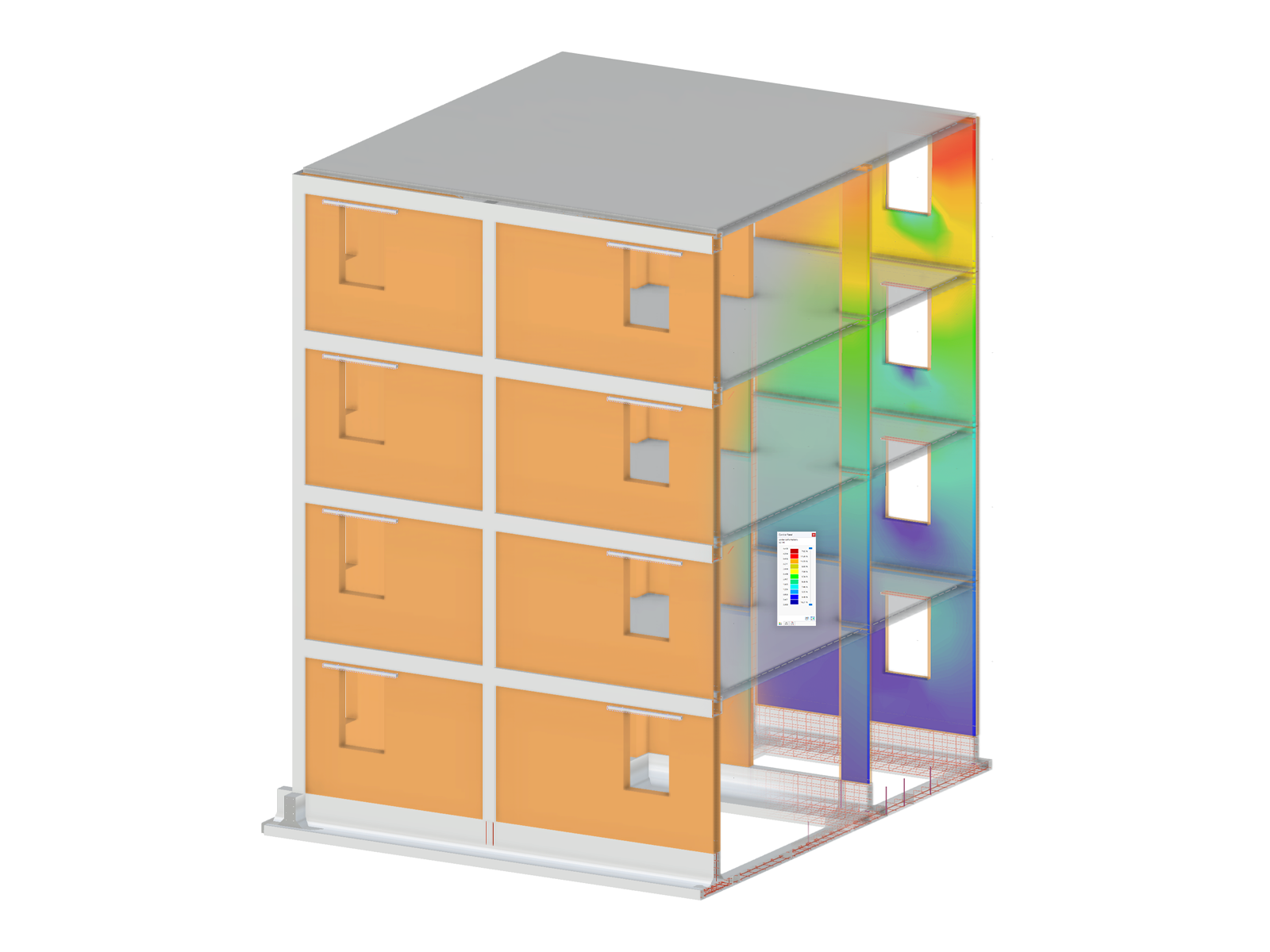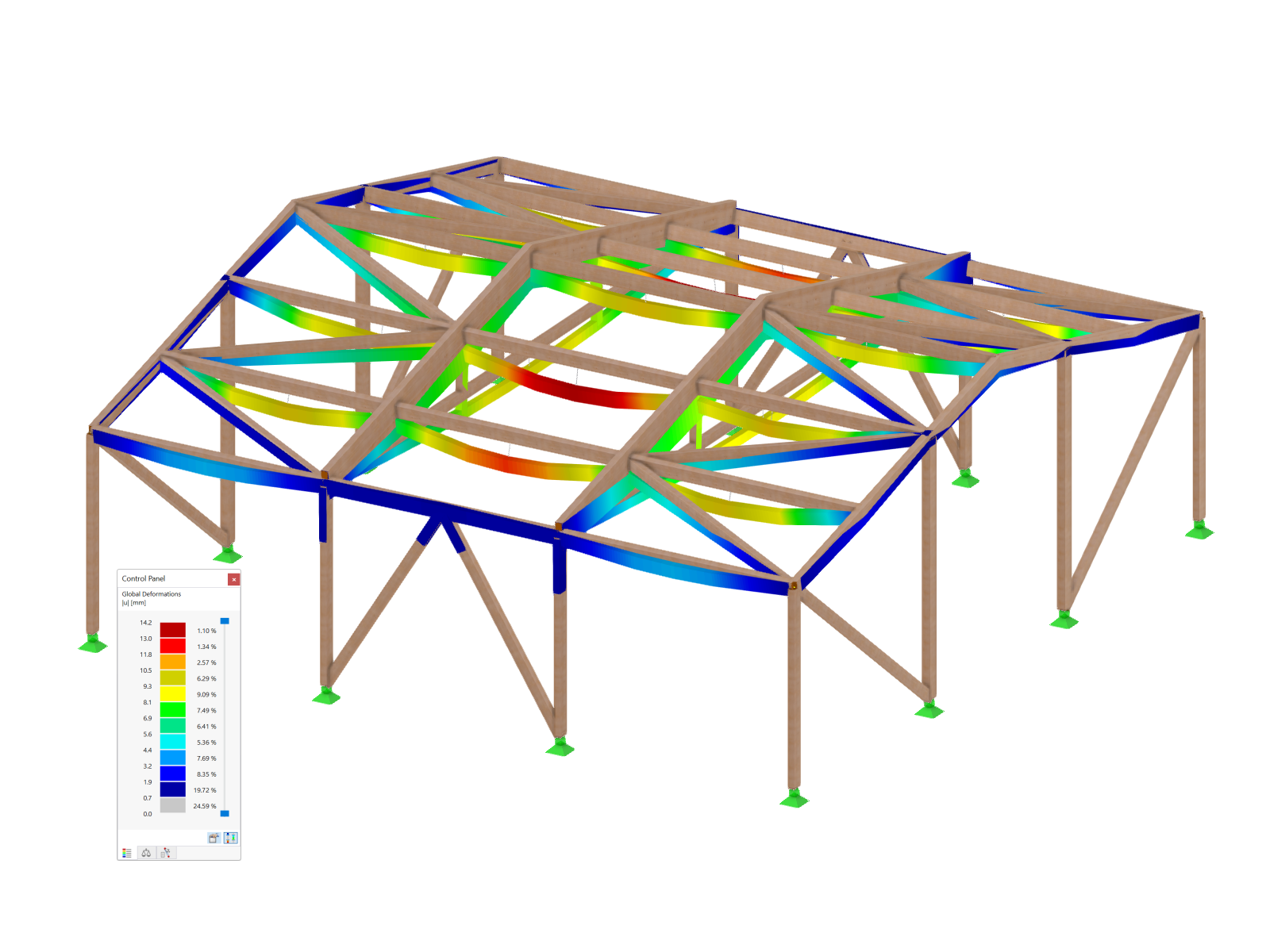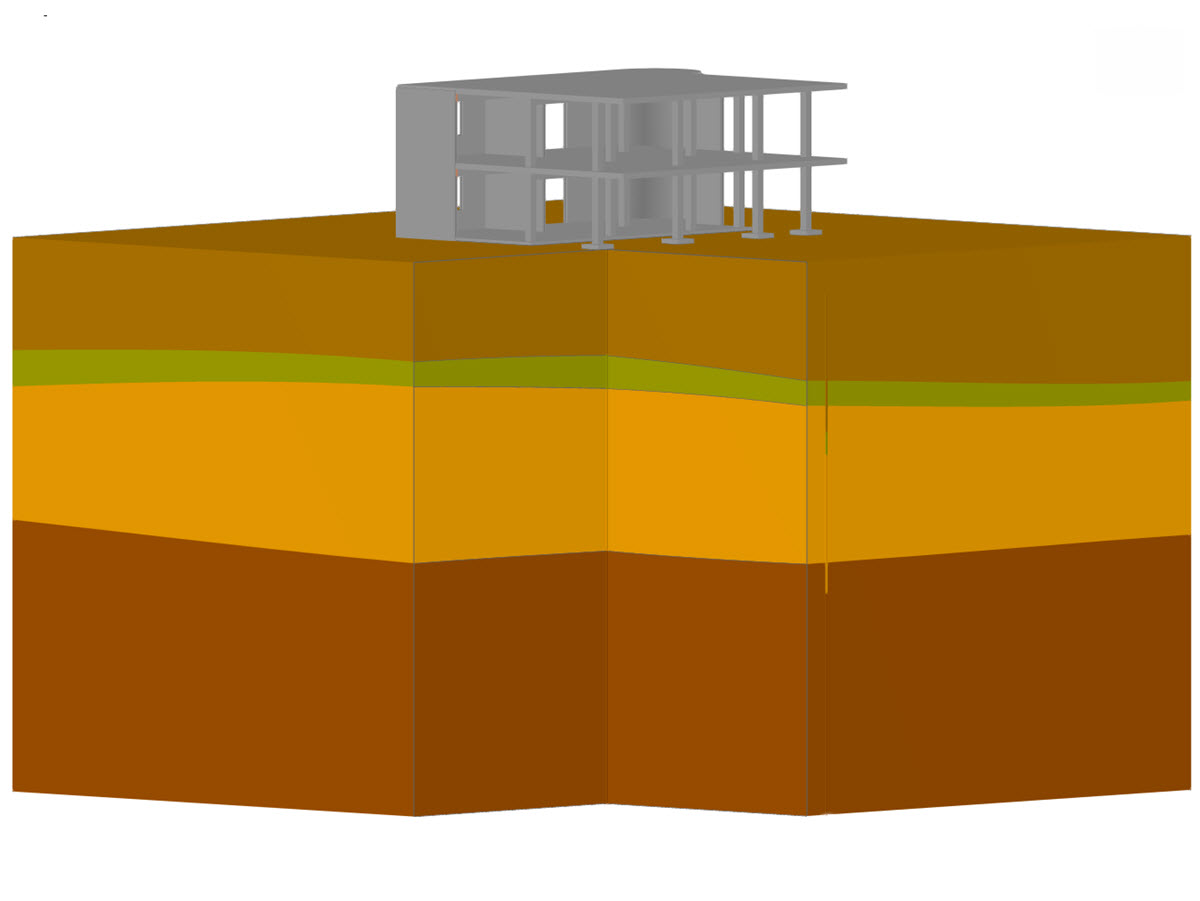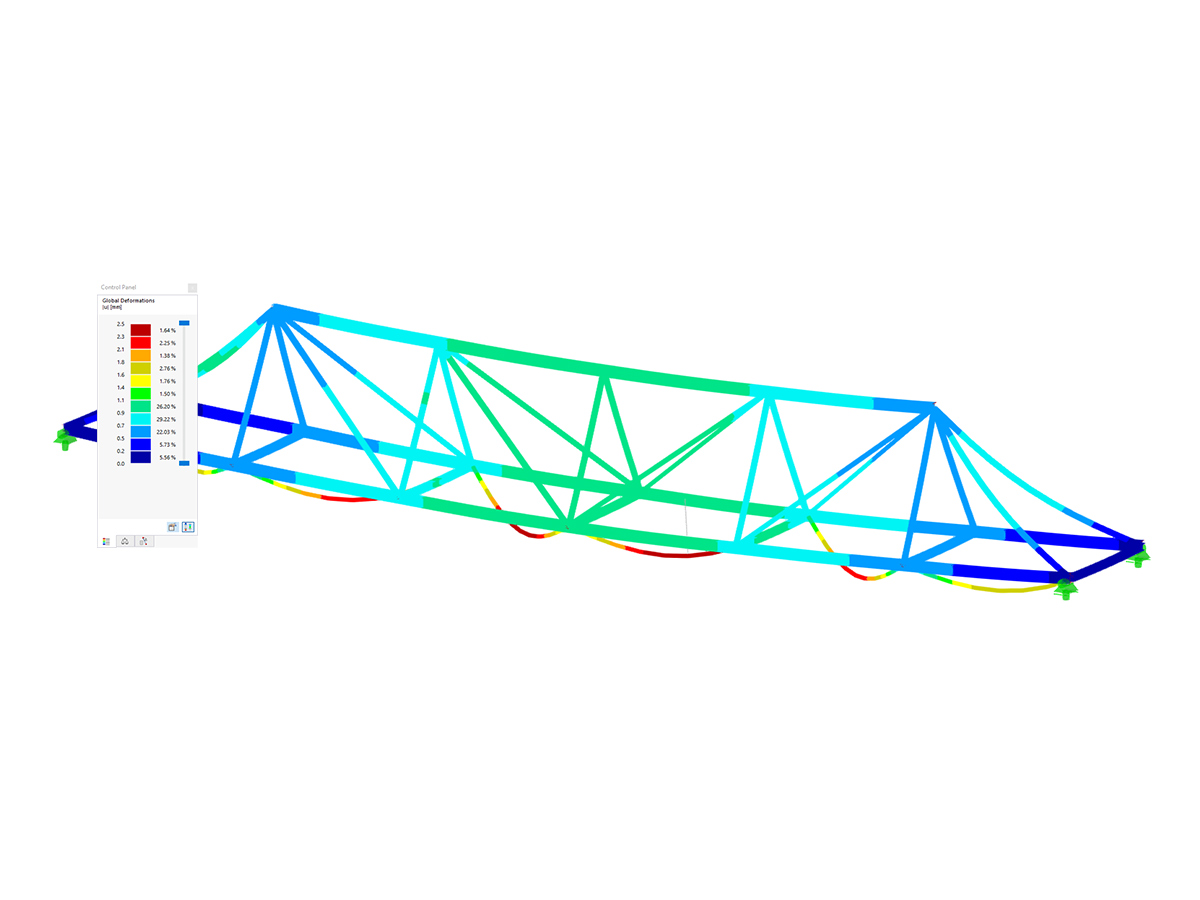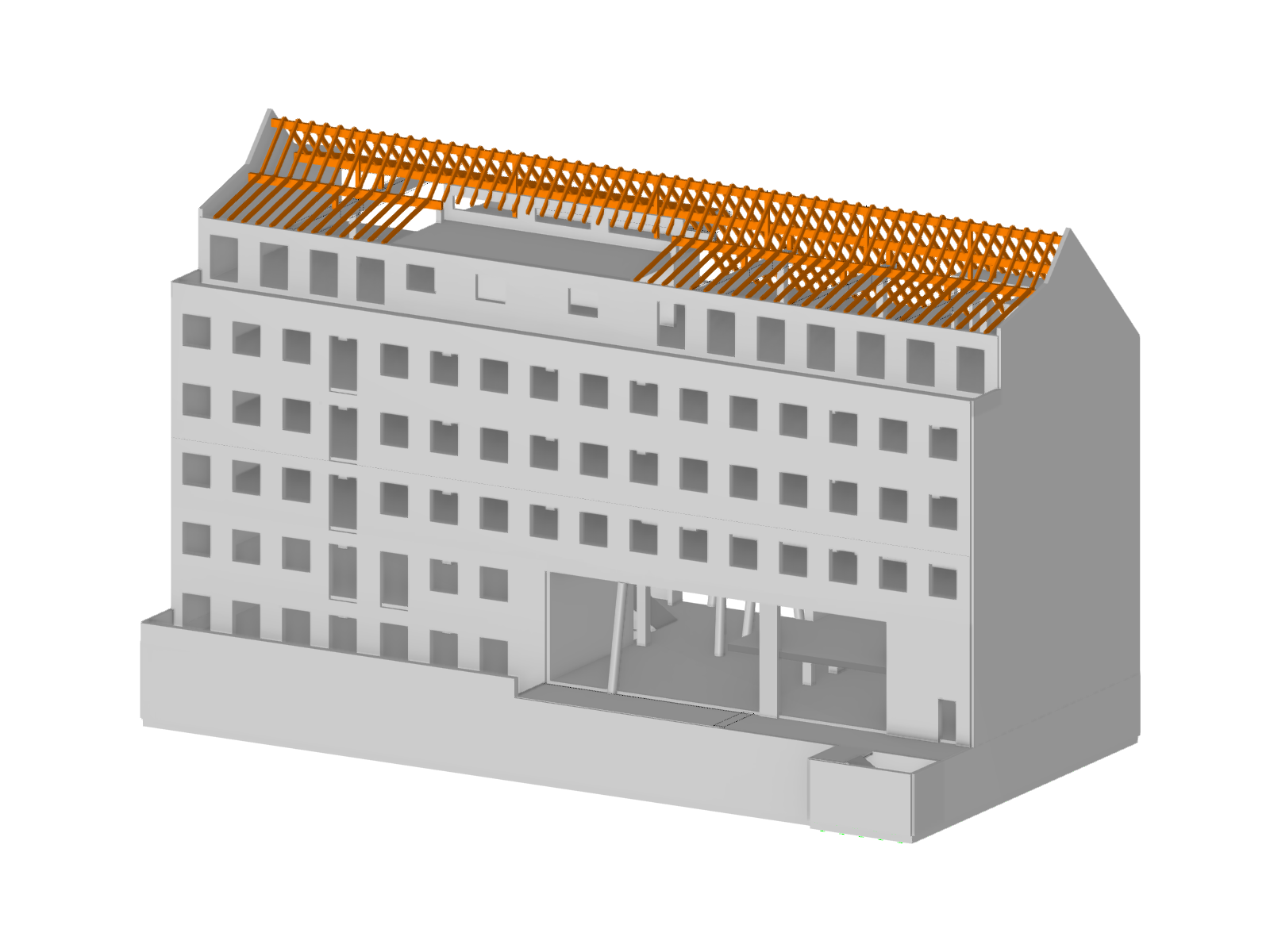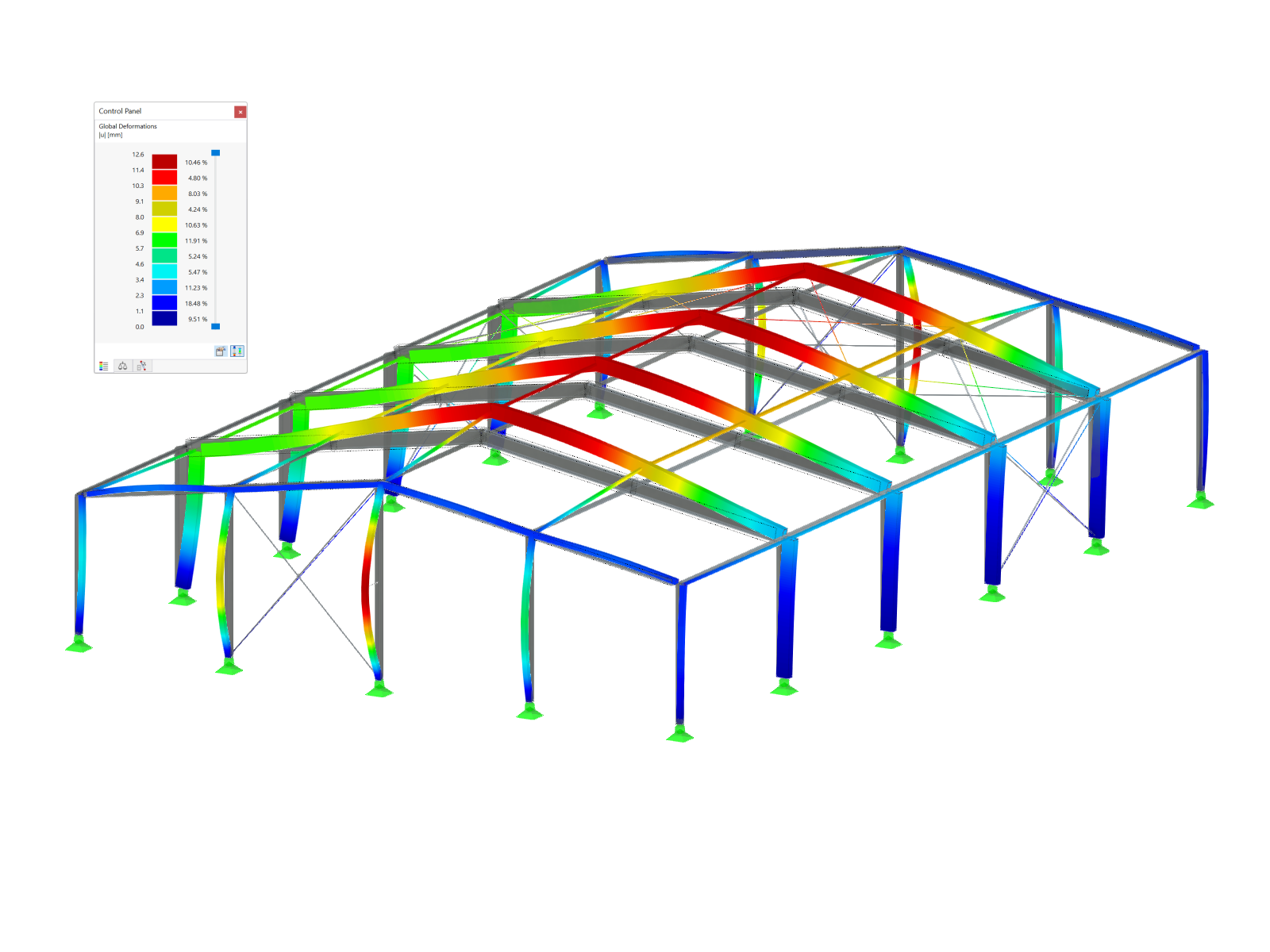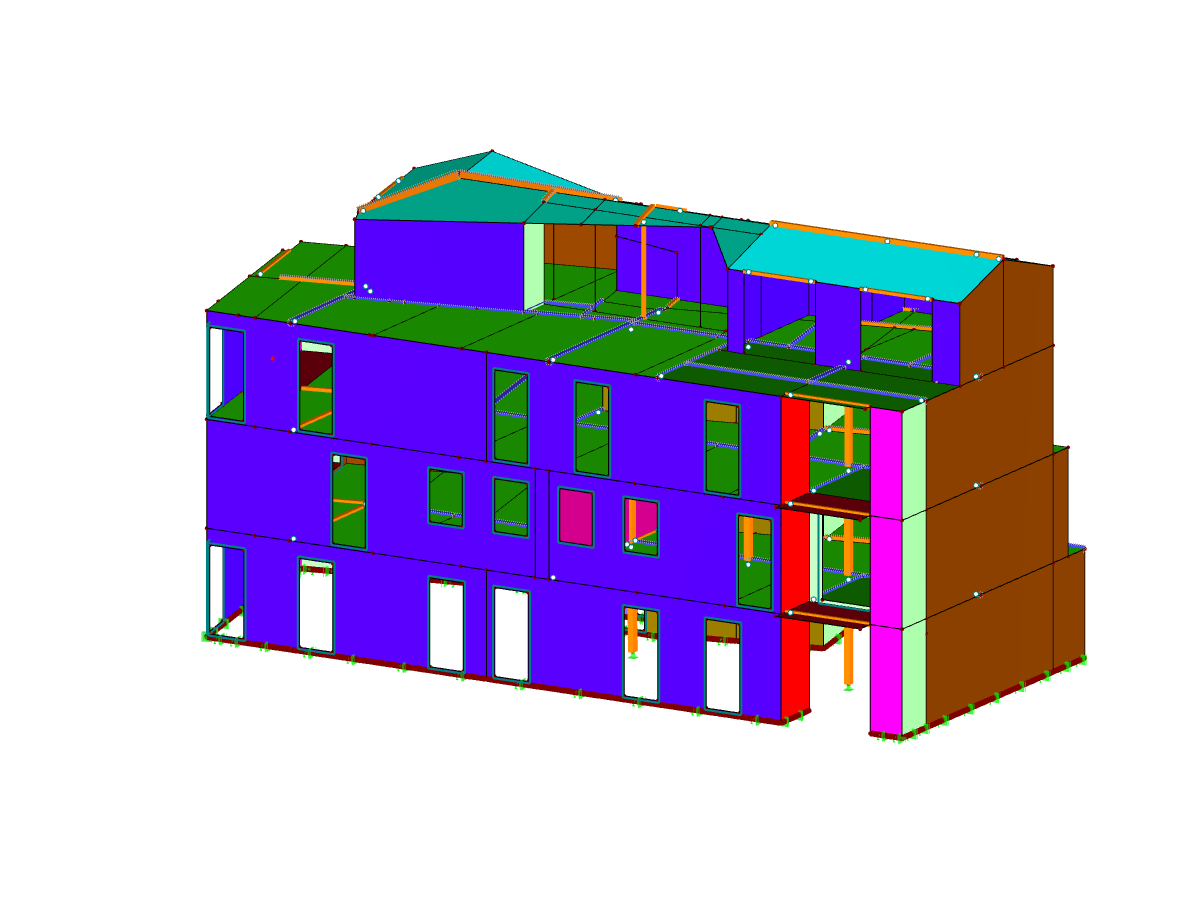This model shows a ceiling composed of timber beams, supplemented by precisely defined RF-LIMITS to control the load transfer. It illustrates modern approaches to timber structures, with the spatial arrangement and connection of the timber elements being accurately represented. The visualization integrates technical details of the beam configuration and transition areas to enable realistic structural simulations. The concept utilizes efficient analysis methods in the Dlubal software environment for further analysis. All the information reflects the exact design and functional coordination of the structural elements.
| 5 star | ||
| 4 star | ||
| 3 star | ||
| 2 star | ||
| 1 star |
Timber Ceiling Structure with RF-LIMITS
| Number of Nodes | 16 |
| Number of Lines | 28 |
| Number of Members | 24 |
| Number of Surfaces | 4 |
| Number of Load Cases | 3 |
| Number of Load Combinations | 20 |
| Number of Result Combinations | 3 |
| Total Weight | 3.019 t |
| Dimensions (Metric) | 10.500 x 10.500 x 0.500 m |
| Dimensions (Imperial) | 34.45 x 34.45 x 1.64 feet |
| Program Version | 5.02.15 |
You can download this structural model to use it for training purposes or for your projects. However, we do not assume any guarantee or liability for the accuracy or completeness of the model.

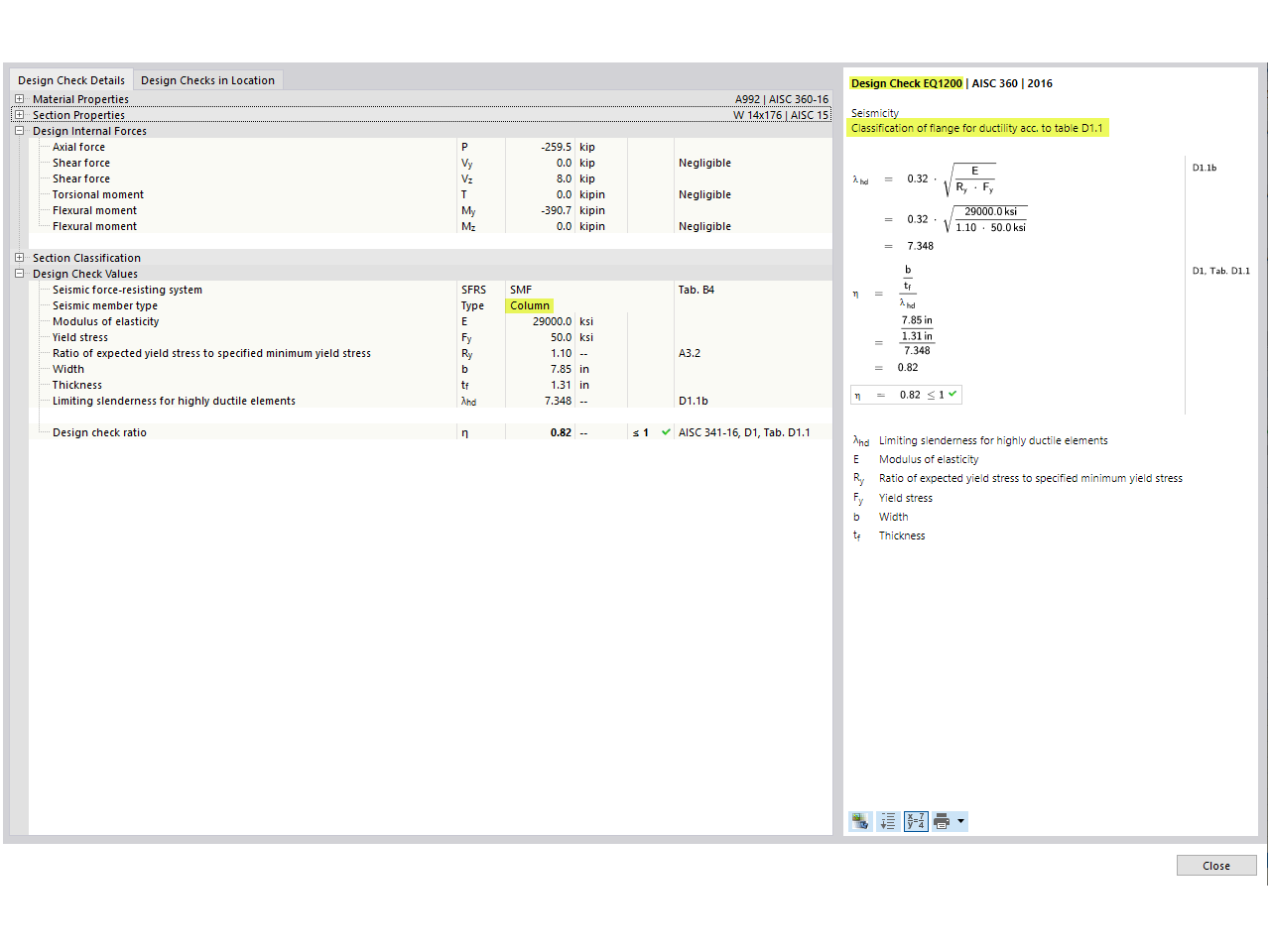
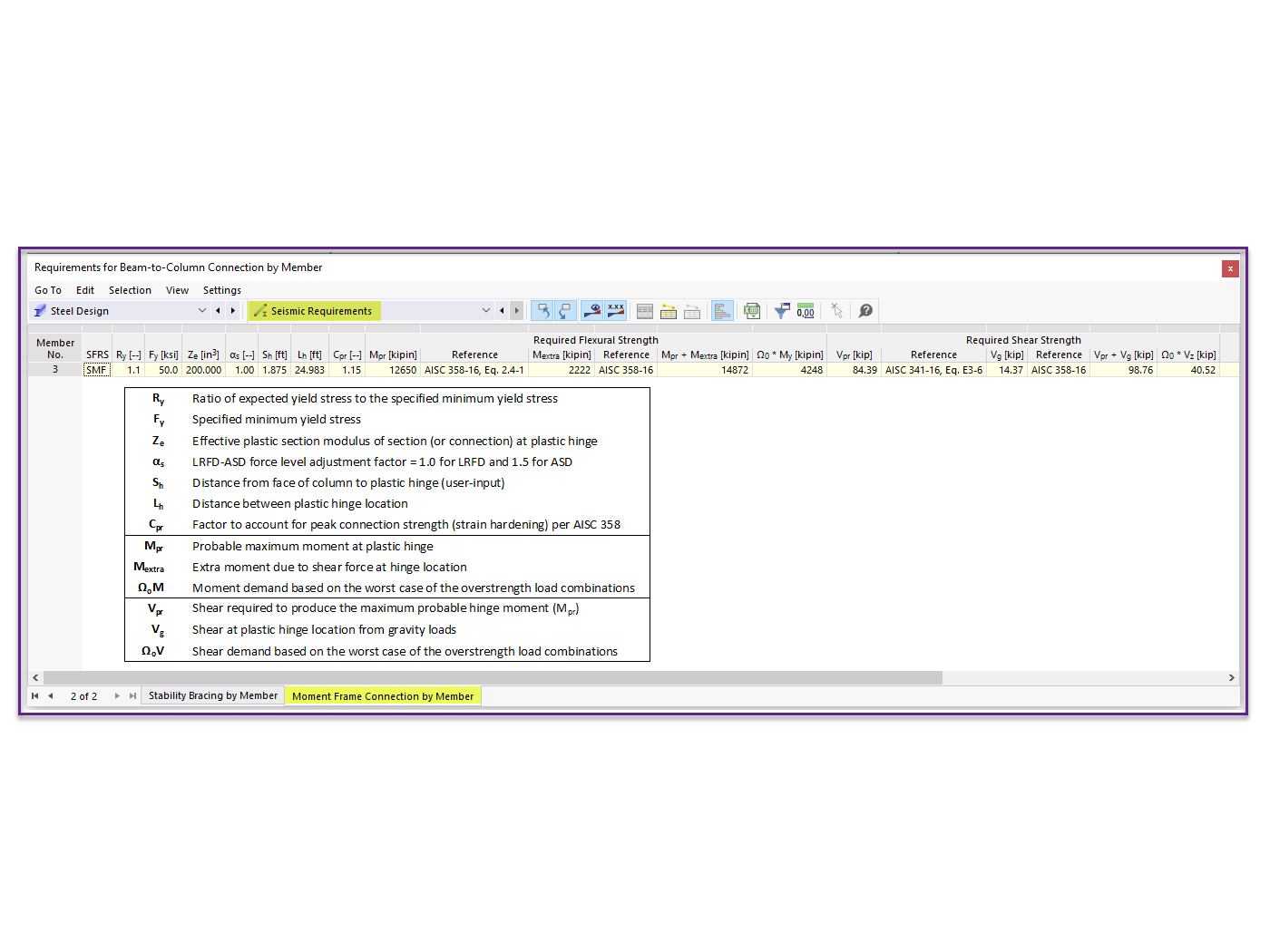


In RFEM 6, there is a hierarchical control between load transfer surfaces and floors in the building model. This means that you can also create walls from load transfer surfaces to take into account curtain walls, for example.
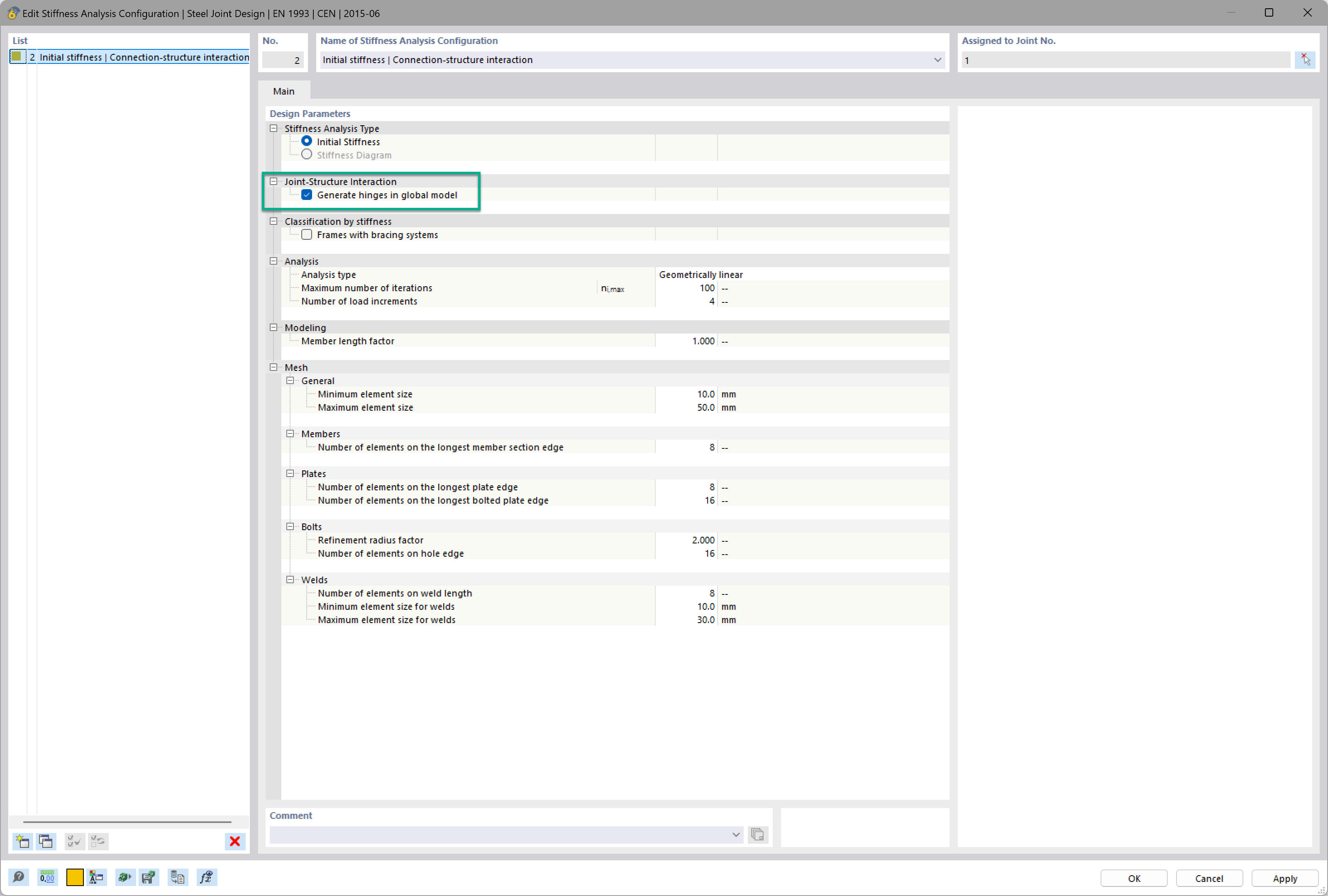
Want to automatically consider steel joint stiffness in your global RFEM model? Utilize the Steel Joints add-on!
Activate joint-structure interaction in the stiffness analysis of your steel joints. Hinges with springs are then automatically generated in the global model and included in subsequent calculations.

When generating shear walls and deep beams, you can assign not only surfaces and cells, but also members.
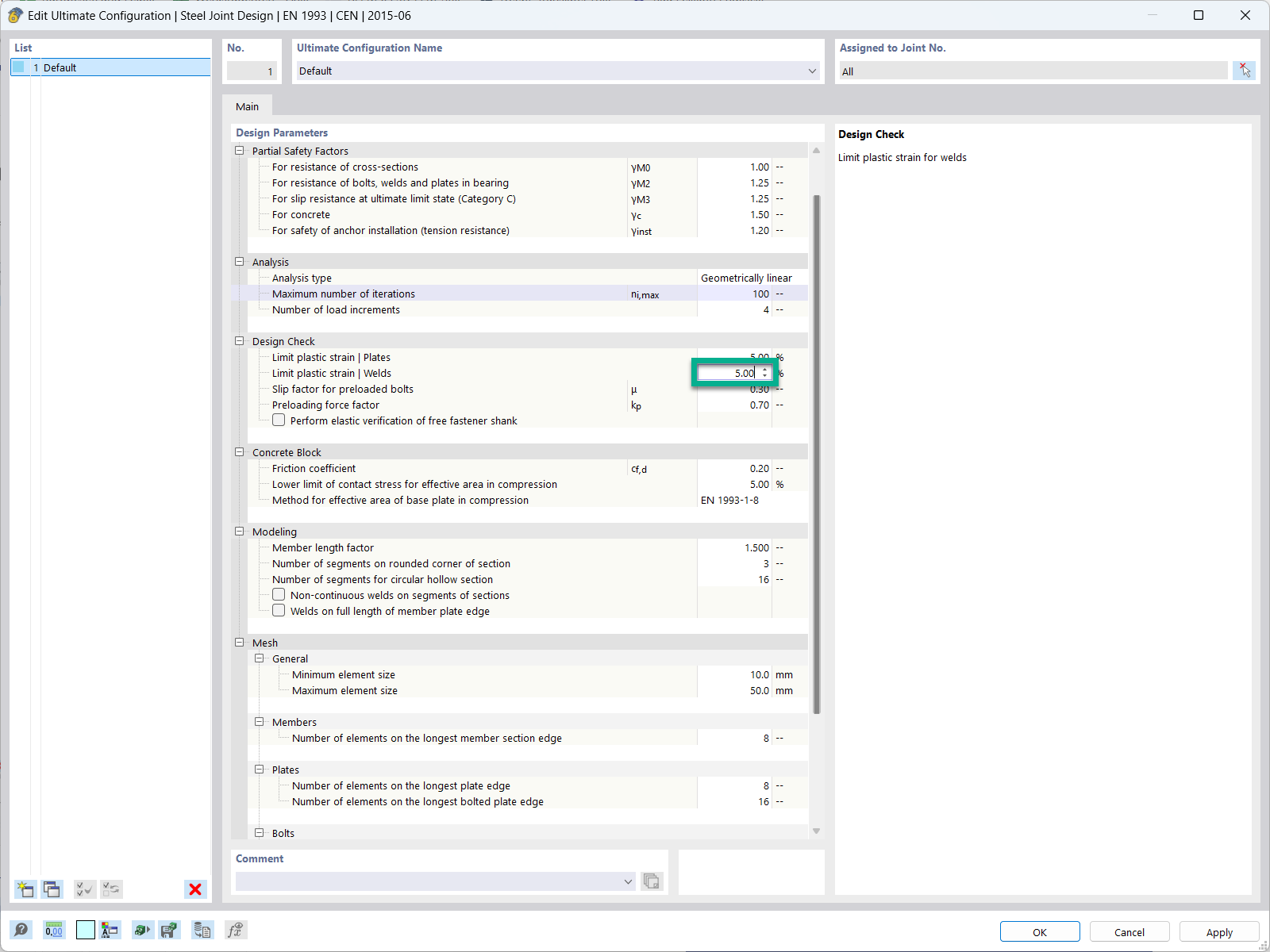
In the ultimate configuration of the steel joint design, you have the option to modify the limit plastic strain for welds.
In the Steel Joints add-on, I get high utilization ratios for preloaded bolts in the tension design. Where do these high utilization ratios come from and how can I evaluate the load-bearing reserves of the bolt?
How can treating a connection as fully rigid result in an uneconomical design?
Is it possible to consider shear panels and rotational restraints in the global calculation?
How can I determine the sufficient total simulation time for an accurate transient wind analysis in RWIND?





















.png?mw=350&hash=c6c25b135ffd26af9cd48d77813d2ba5853f936c)





















_1.jpg?mw=350&hash=ab2086621f4e50c8c8fb8f3c211a22bc246e0552)




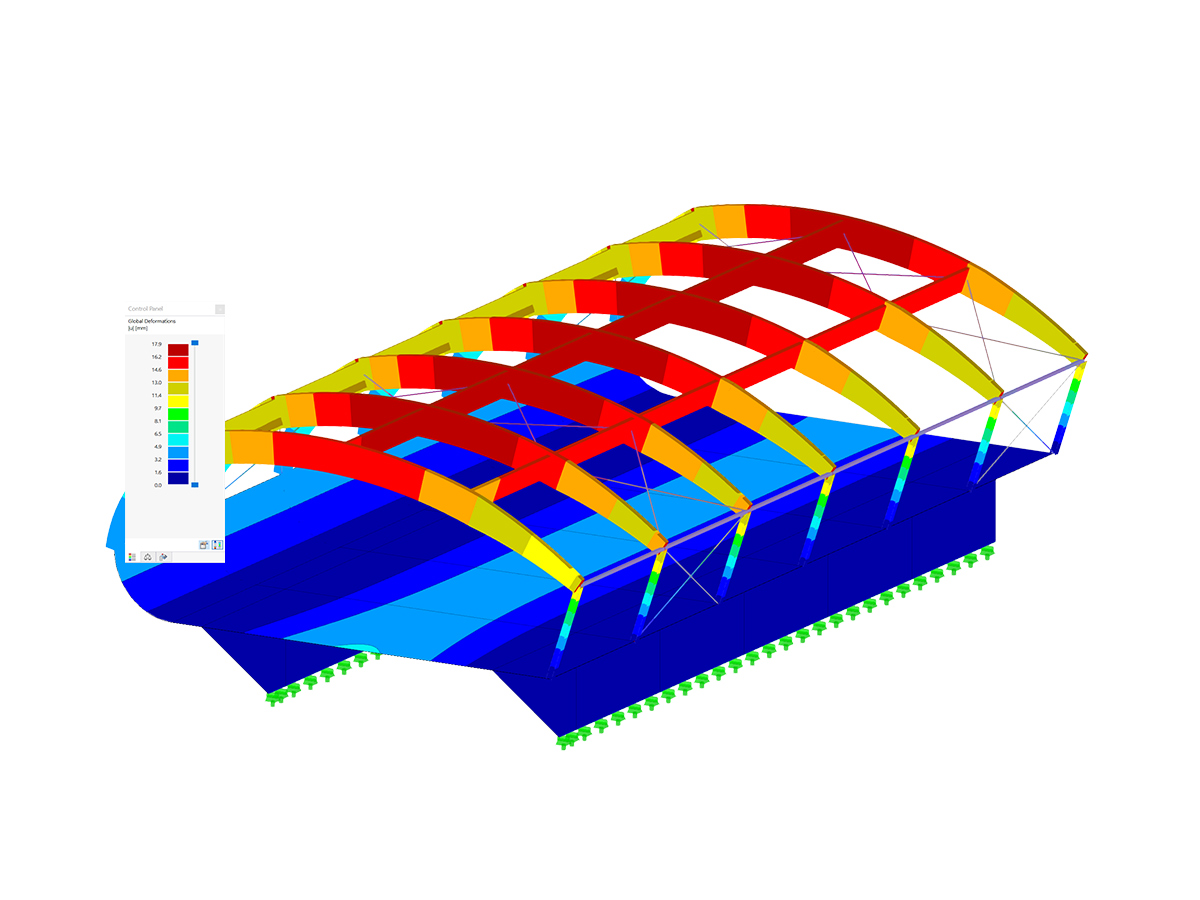
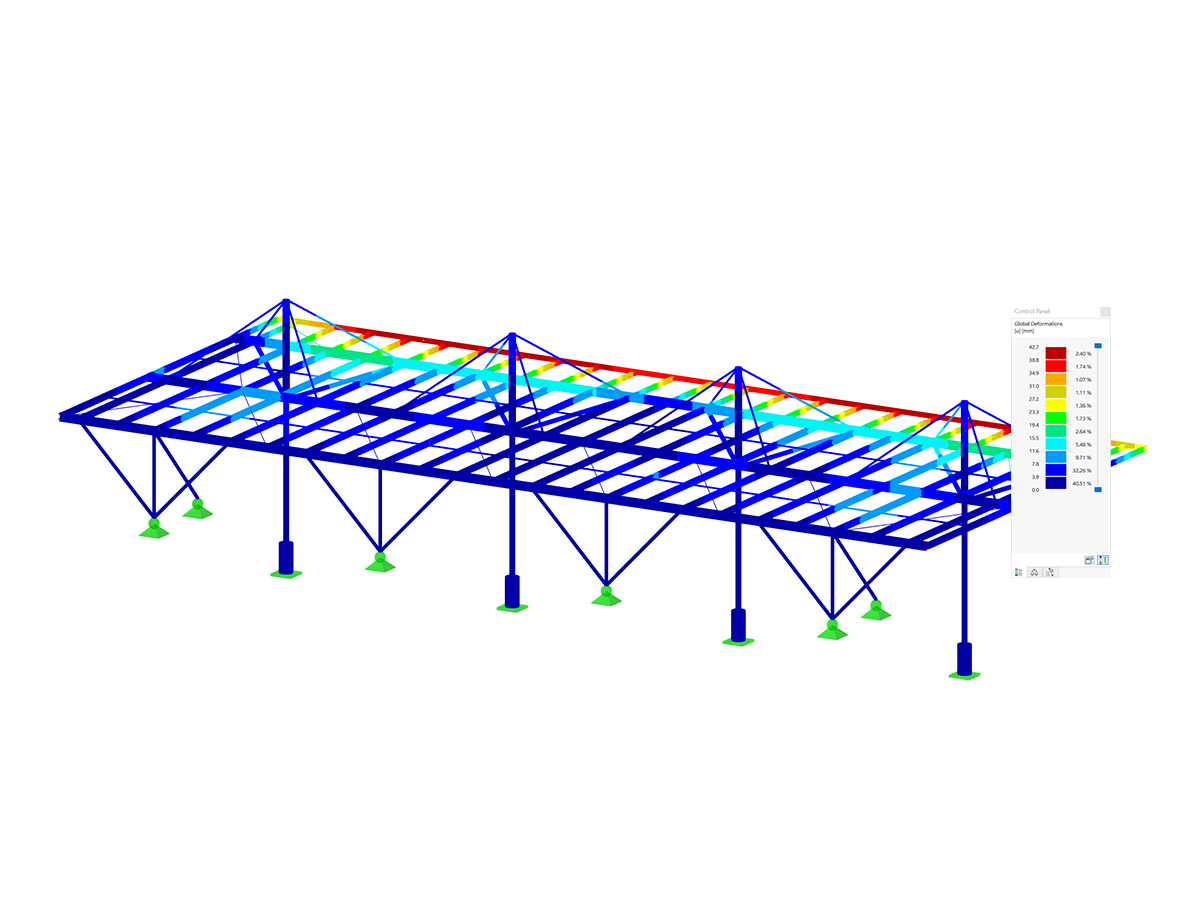
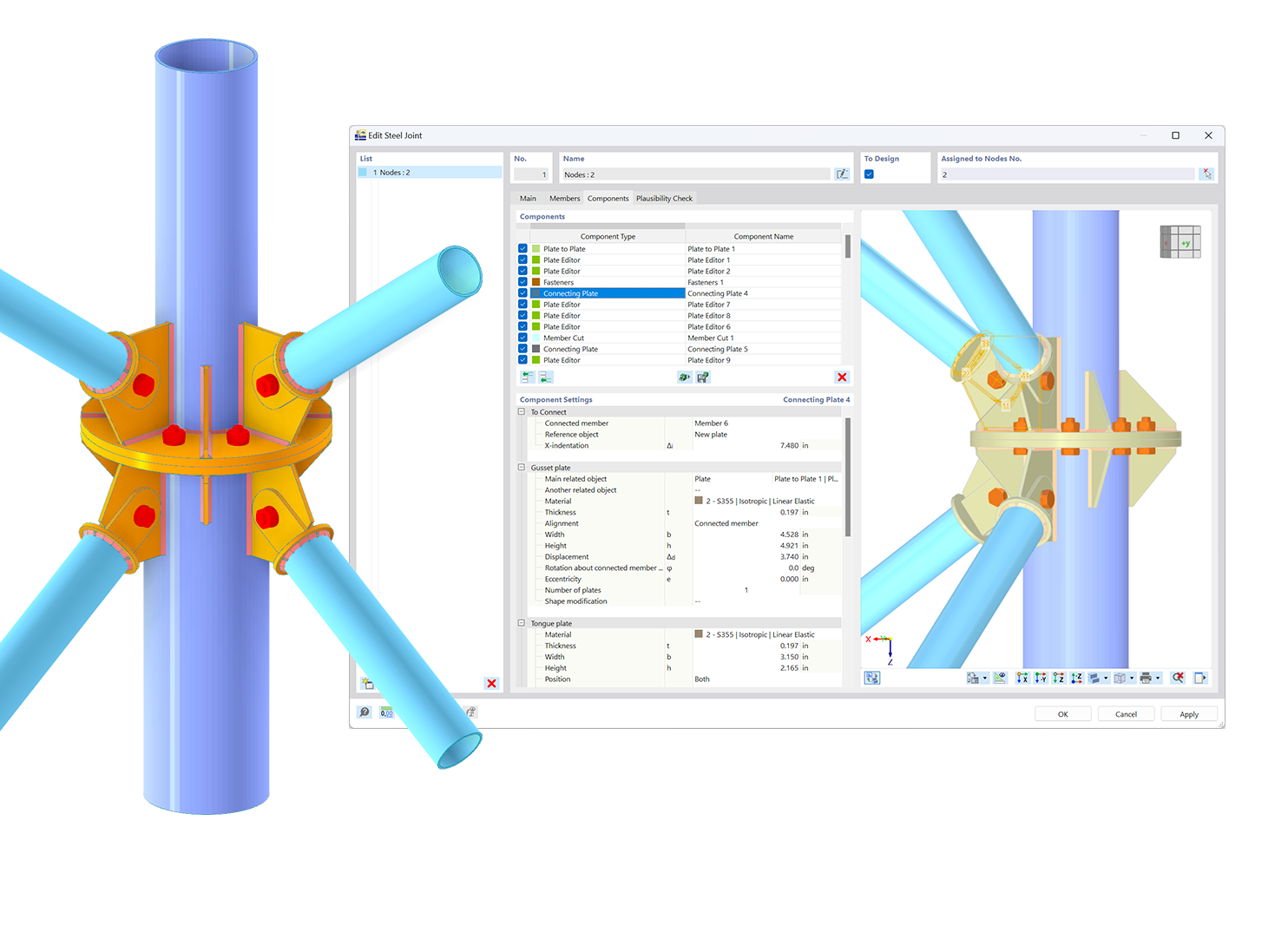.png?mw=600&hash=49b6a289915d28aa461360f7308b092631b1446e)
